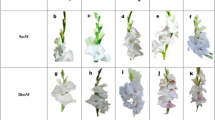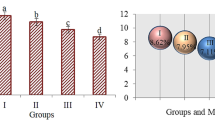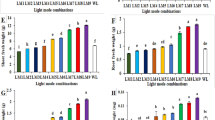Abstract
IT has been known since the beginning of this century that visible light is able to induce inhibitory and lethal effects on living organisms when oxygen and some sensitizing substance (which absorbs the light) are present. This phenomenon has been called ‘photodynamic action’. The biological effects are believed to be due mainly to a photosensitized oxidation of organic material1. The fact that mutations can be induced photodynamically in microorganisms has been shown by Döring2 and Kaplan3–5. Previous studies have failed to demonstrate the production of structural changes in chromosomes among the effects induced in plant root-tips by visible light in the presence of some sensitizing substance6,7. The dyes used in these studies, eosin and neutral red, have no particular affinity for the cell nucleus. It seems reasonable to assume that in order to induce changes in the genetic material the light has to be absorbed by dye molecules present inside the cell nucleus. Therefore, acridine orange, which, like a number of other acridine derivatives, has a high affinity for nucleic acids8,9, was chosen as the sensitizing substance in the present study of the effect of visible light on chromosome structure in the root-tip cells of the broad bean, Vicia faba.
This is a preview of subscription content, access via your institution
Access options
Subscribe to this journal
Receive 51 print issues and online access
$199.00 per year
only $3.90 per issue
Buy this article
- Purchase on Springer Link
- Instant access to full article PDF
Prices may be subject to local taxes which are calculated during checkout
Similar content being viewed by others
References
Blum, H. F., “Photodynamic Action and Diseases caused by Light” (Reinhold Pub. Corp., New York, 1941).
Döring, H., Naturwiss., 26, 819 (1938).
Kaplan, R. W., Archiv. Mikrobiol., 15, 152 (1950).
Kaplan, R. W., Planta, 38, 1 (1950).
Kaplan, R. W., Naturwiss., 37, 308 (1950).
Preacher, W., Planta, 17, 461 (1932).
Patterson, E. K., Amer. J. Bot., 29, 109 (1942).
Armstrong, J. A., Exp. Cell Res., 11, 640 (1956).
Beers, R. F., Hendley, D. D., and Steiner, R. F., Nature, 182, 242 (1958).
Kihlman, B. A., J. Biophys. Biochem. Cytol. (in the press).
Meyer, F. R., and Ronge, G., Angew. Chemie, 52, 637 (1939).
Revell, S., “Symposium on Chromosome Breakage”, Heredity, 6, supp., 107 (1953).
Kihlman, B. A., J. Biophys. Biochem. Cytol., 3, 363 (1957).
Kihlman, B. A. (unpublished results).
Schenck, G. O., Dechema-Monagraphien, 24, 105 (1955).
Schenck, G. O., Gollnick, K., and Neumüller, O. A., Liebigs Ann. der. Chemie, 603, 46 (1957).
Loveless, A., Nature, 167, 338 (1951).
D'Amato, F., Caryologia, 2, 229 (1950).
Kihlman, B. A., Nature, 182, 730 (1958).
Kihlman, B. A., J. Biophys. Biochem. Cytol. (in the press).
Author information
Authors and Affiliations
Rights and permissions
About this article
Cite this article
KIHLMAN, B. Induction of Structural Chromosome Changes by Visible Light. Nature 183, 976–978 (1959). https://doi.org/10.1038/183976a0
Issue Date:
DOI: https://doi.org/10.1038/183976a0
This article is cited by
-
Die wirkung von Trypaflavin allein und in Kombination mit sichtbarem Licht auf die Chromosomen von HeLa-Zellen und menschliche Leukocyten
Human Genetics (1969)
-
The mutagenicity inDrosophila melanogaster of caffeine and of other compounds which produce chromosome breakage in human cells in culture
Zeitschrift f�r Vererbungslehre (1966)
-
Chromosome Damage in Human Diploid Cells following Activation of Lysosomal Enzymes
Nature (1965)
-
The effects of inhibitors of RNA and protein synthesis on cytological development during meiosis
Chromosoma (1964)
-
Über den Einfluß von Acridinfarbstoffen auf die Induktion von Chromatidenaberrationen durch Radiomimetica
Die Kulturpflanze (1963)
Comments
By submitting a comment you agree to abide by our Terms and Community Guidelines. If you find something abusive or that does not comply with our terms or guidelines please flag it as inappropriate.



